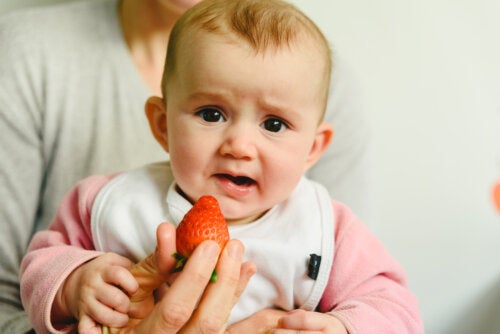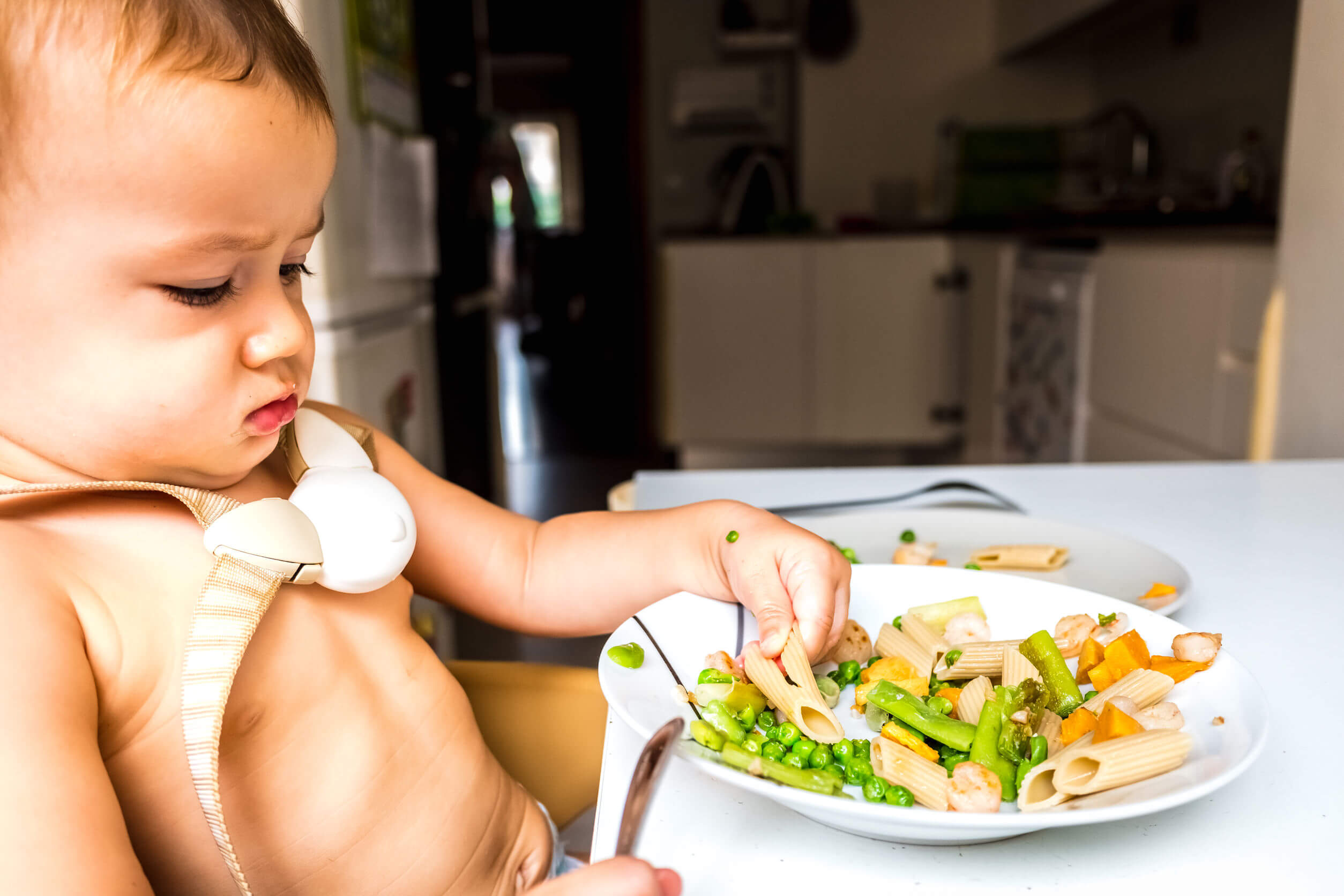My Child Is Disgusted by Food: What Do I Do?
Why does your child feel disgusted by food? Discover different strategies to deal with this issue in the right way.

Have you ever considered how emotions influence eating? Although the rejection of certain foods in childhood is normal, it can be quite a headache. For this reason, we want to teach you how to act when your child feels disgusted by food.
First of all, disgust is one of the 7 basic emotions defined by Paul Ekman. It can appear as the result of anything we perceive through the senses or as in the face of the actions or perceptions of people and ideas. In addition, it has a negative and adaptive connotation, as it’s influenced by different factors, as we’ll see below.
Learn more: How To Make Sure Your Baby Has A Good Relationship With Food
Why does your child feel disgusted by food?

Texture: The main reason why your child feels disgusted by food
The sensation that food produces in the mouth and to the touch, as well as the crunch when chewing, determines the preference for certain foods. So far, we have evidence that 55% of girls and 37% of boys between the ages of 10 and 13 tend to reject foods for these reasons, based on their opinion.
It even happens when you first introduce food. Therefore, it’s always best to offer a wide variety of food with different textures so that they get used to it from an early age.
In addition, rejection usually occurs when noticing chunks of food or because of textures that are too soft. This is important in children with greater sensitivity to touch in the hands and tongue when introducing food in the mouth. On the contrary, you can achieve greater acceptance with age and the progressive introduction of cooked foods that aren’t mashed, just like in Baby Led Weaning.
Haven’t tried it before, but don’t like the look
This normally occurs from 6-12 months and can be maintained up to 3-4 years. It’s a defense mechanism against the unknown and danger. This is the moment when visual appearance comes into play! Therefore, take the opportunity to be careful regarding the presentation and the combination of colors.
Even the very smell that the food gives off can make you sick. This is the case of broccoli and certain oily fish. Another aspect that must be taken into account is the taste of foods. Do you know the best way to encourage them to try them? Using aromatic herbs and spices such as rosemary and oregano.
Psychological and emotional aspects produced when your child feels disgusted by food
In turn, food generates pleasure and, therefore, produces an emotional impact. In addition, memory and the association produced by the environment at mealtime come into play. An example would be the obligation to eat everything, having had a bad time due to the risk of choking, or an unfavorable family environment that makes meals unpleasant.
Remember that sitting at the table is a social act and that your little one is in a learning stage. Therefore, they’ll pay attention to everything that happens. As a consequence, any unpleasant and similar situation will trigger constant rejection. It’s something that can be maintained over the years unconsciously.
At the same time, disgust is an original defense mechanism of the body, and in general, it’s part of the complex mechanisms that cause things to attract or repel us. In the brain, the anterior lobe of the insula, a small region involved in emotions and connected to taste and smell, is activated.
As human beings, we are omnivores, but there are foods that can end up being harmful to our bodies. Therefore, disgust toward certain foods is a universal emotion and can be felt even by blind people. For researcher Eduardo León, disgust, as a natural and cultural response, functions as a “mouth guard”.
It’s important to highlight the rational nature of emotions, as they’ve served to guarantee the survival of the species.
Like other emotions, disgust has components:
- Phenomenological, when we experience repugnance, even nausea or vomiting.
- Cognitive, because it implies a threat of contamination.
- Physiological, by activating the parasympathetic nervous system to give involuntary responses.
- Behavioral, with that typical expression of similar rejection in all cultures and of course in children.
If your child feels disgusted by food, you already know that, from their deepest nature, they’re communicating something to you.
What can you do to fix the problem?
Once you know the reasons why your child feels disgusted by food, it’s up to you to do everything possible to help them overcome it or find alternatives.
Provide a food equivalent to that which they reject
How many foods gross you out? It’s impossible to like everything, but that’s not a problem if you enjoy other foods from the same group. That’s the way to provide the same nutrients and allow your child to grow healthy and without any deficits.
As an example, chard can be replaced with spinach or lettuce leaves. On the other hand, if you detect that the rejection is due to a certain cooking technique, you can vary it until you find the one your child likes. Sometimes repeated exposure and handling of food increases acceptance.
Define your food priorities
The fundamental thing when your child is disgusted by good is to establish some basic guidelines. This way, you ensure that they eat enough and that their diet is varied and healthy. Therefore, the main objective is for their diet to contain all the food groups.

The idea is that you make sure they you don’t restrict too much food, as it can become a disorder. Even analyze the reasons why they behave like this and detect if it limits their life around the table. Sometimes it may be due to a motor or psychomotor problem in their mouth and the rest of their digestive system.
Remember that even if they hate fish, you can replace it with meat, eggs, or legumes. Or, if they hate sardines, they can eat salmon or any other oily fish.
Look for a progressive way to introduce the food, but don’t force your child to eat it
If you want their disgust to decrease, avoid forcing or rewarding them, as this will have the opposite effect. In addition, it will become a moment of tension and frustration for both of you. Therefore, be patient and take it easy.
A good trick is to give that food in small quantities and cooked in a different way. You can also combine it with other foods that they like. For example, if they reject zucchini but love pasta with tomato sauce, mix it up with small pieces sautéed in the pan and dressed with oregano. Another day, you can include it as part of a lasagna or in a puree with another vegetable.
